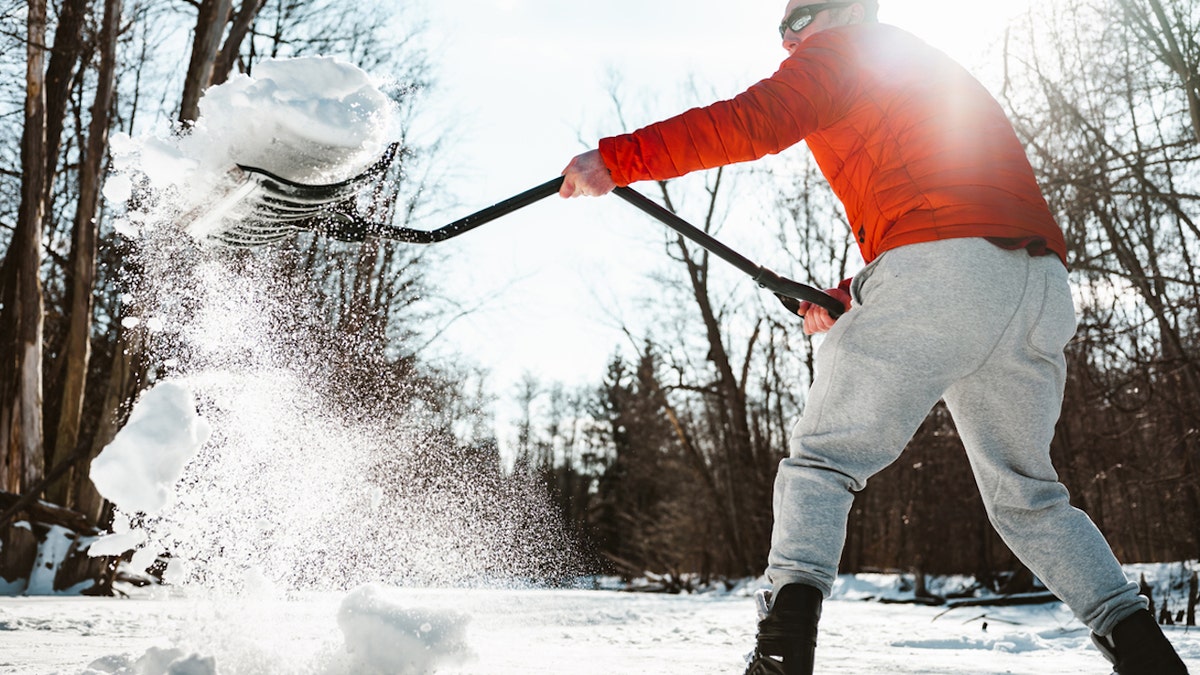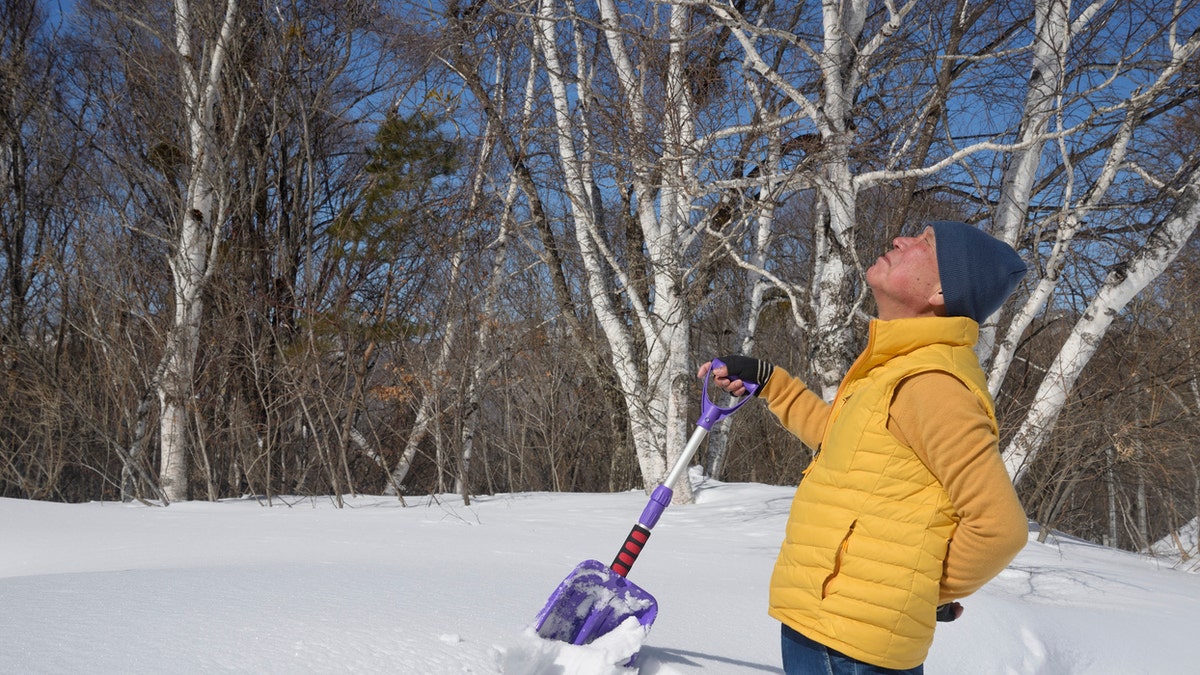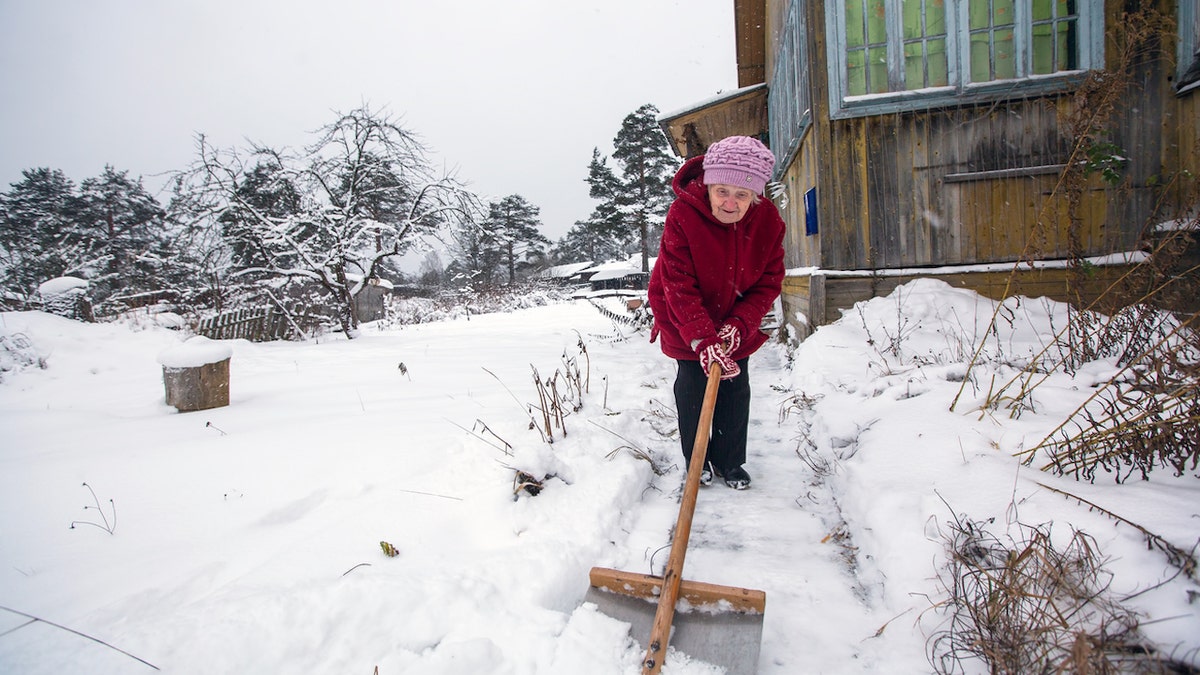While snow may be peaceful and pretty, removing it can be risky.
Snow shoveling is one of the most dangerous winter activities, with research showing that it leads to around 11,500 injuries and medical emergencies and 100 deaths each year.
The American Heart Association has identified snow shoveling as an activity that can put extra stress on the heart.
PREVENT DANGEROUS FALLS AMONG OLDER ADULTS BY TAKING KEY STEPS
Beyond cardiac events, other common injuries include broken bones, cuts, bumps and bruises from slipping and falling.
Two doctors shared with Fox News Digital their insights and recommendations about safe snow shoveling.
Why is shoveling snow so dangerous?
Dr. Bradley Serwer, a cardiologist and chief medical officer at VitalSolution, an Ohio-based company that offers cardiovascular and anesthesiology services to hospitals nationwide, noted that there is an overall increased risk of cardiovascular morbidity and mortality during the winter months.
“This is due to multiple factors including seasonal temperature, level of physical activity, air pollution, infections, stress levels and fluctuations in diet,” he told Fox News Digital.
CANADIAN POLITICIAN’S TWEET ABOUT WIFE SHOVELING SNOW AFTER 12-HOUR HOSPITAL SHIFT TAKES UNEXPECTED TURN
Physical inactivity is a major factor, Serwer noted, as during the winter months, people tend to be less active and thus are less prepared for the high physical demands of shoveling.
“It is often underestimated what kind of physical workload is required to shovel a substantial amount of snow,” Serwer said. “Shoveling snow can be a very strenuous activity, placing notable strain on the cardiovascular system.”
Frigid temperatures also increase the risk.

“Cold temperatures can cause peripheral blood vessels to constrict, which raises blood pressure and can put extra strain on the heart,” he said.
It’s also easy to become dehydrated while working in cold climates, as people tend to forget to replace fluids as needed, Serwer noted.
“It is also important to note that orthopedic injuries are very common due to falls from slick conditions,” he said.
Tips to reduce risk while shoveling snow
To ensure adequate protection from the cold, Serwer recommends dressing in layers — including coats, hats, scarves and gloves — to avoid overheating, shedding them as you warm up.
Sarah Lee, M.D., an emergency medicine physician at the University of Maryland Medical Center Midtown campus, warned people to watch out for signs of frostbite, particularly in the fingers, toes and nose.
ASK A DOC: ‘HOW SHOULD I CARE FOR MY SKIN DURING THE WINTER?’
Some early symptoms of frostbite include severe cold, pain, swelling and discoloration.
“If you experience these symptoms, it is recommended that you go to a warm place immediately,” Lee told Fox News Digital. “Be sure to change into warm and dry clothes once inside.”
It’s also important to stay hydrated and avoid alcohol and tobacco products while working, the doctor said.

Before getting started, experts recommend warming up with stretches.
“Shoveling snow uses a lot of big muscle groups,” said Lee, who is also an instructor of emergency medicine at the University of Maryland School of Medicine. “Stretch before starting to warm up your muscles and joints.”
NEW YEAR, NEW ROUTINE: A GUIDE TO BASIC STRETCHING FOR BETTER OVERALL HEALTH
When lifting heavy amounts of snow, it’s important to do the heavy lifting with your legs to prevent straining your back, added Lee.
For those who are not typically very active, it’s important to “take extra caution and know your limits,” Lee said.
“Try to avoid overexerting yourself and take plenty of small breaks if you are shoveling a large area,” she advised.

To prevent slips and falls, Lee warned to watch out for black ice, which can be hard to detect.
“The colder the weather, the more likely it will be that there will be frozen ice on the ground,” she noted.
Particularly for elderly people, Lee recommends keeping their cell phone in their pocket so they can call for help in the event of an emergency.
CLICK HERE TO SIGN UP FOR OUR HEALTH NEWSLETTER
When removing snow, Serwer said it’s safer to push the snow out of your path instead of lifting a heavy snow shovel over your head.
People with certain conditions or risks should consult with a doctor before shoveling, the doctors agreed.

“Generally, those who have any mobility-limiting conditions or those with high fall risks — those who are elderly, deconditioned or have a more sedentary lifestyle — should exercise extra caution,” said Lee.
People who have a history of cardiac problems should check with their doctor before any kind of strenuous exercise, she said.
“Patients who take blood-thinning medications should also take special care to avoid falls,” Lee added.
For those who are at a high risk of cardiac events, the experts recommend hiring someone else to complete the task.
For more Health articles, visit www.foxnews.com/health.
Read the full article here